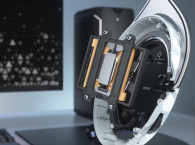Sound is energy made by vibrations and at a concert you see the performers, hear the music, and feel the bass haptically through structure-borne and soft tissue sensations. While audio magazines focus on what we hear, and audio-video publications also detail what we see, haptic sensations are not a topic commonly “touched” by publications and yet they augment our senses.

In the January 2021 issue of audioXpress, we provided a thorough exploration of bass shakers and haptic devices with a focus on music and home theater reproduction. We promised to return to the topic and further explore tactile technology and the wide range of unconventional haptic applications.
The ability to perceive and interact with the world through vibration and touch contributes to the realism, and conversely haptics strengthen the illusion and simulation of reality. The smoothing vibrations of haptic therapies have proven in many clinical studies to calm the nervous system and improve heart rate variability (HRV) as a safe, non-invasive stress relief tool without drugs or side effects. Clinical studies have shown positive interaction with depression, PTSD, bipolar, insomnia, and autistic users.
Reproduction of this tactile component can be achieved through the use of a transducer popularly known as a “bass shaker” coupled, sized, and tuned into the specific platform. These transducers pass low-frequency vibrations into them so that they can be felt.
Bass shakers have the power to intensify everything while improving the sensory interaction. For gaming, home theaters, movie theaters, discotheques, and theme park rides, this “tactile” component is able to add a fourth dimension to reproduce the tactile impact of explosions, engine sounds, thunder, and other bone-rattling low-frequency content.
First popularized by Pioneer more than 40 years ago with its Bodysonic bass shaker, used everywhere from discos to car seats, today’s haptics will give you a nudge when your smartphone is silenced, your Advanced Driver Assistance System (ADAS) will give you a poke when you are driving and feeling sleepy, or you might get a tactile “handshake” feedback from a touchscreen confirming your selection.
The functions and locations are truly all over the place with end users increasingly coming into contact with haptics in medical devices, smartphones/tablets, and other touchscreens for gaming, sport fitness, and more.
Haptic motors are what most of us initially encountered in flip phones using a micromotor with an off-center weight on the shaft. These encompass two common motor types: Eccentric Rotating Mass (ERM) vibration motors and Linear Resonant Actuators (LRA) vibration motors (also known as linear vibrators).
While the ERM haptic actuators are adequate to discreetly poke you in your pocket when getting a call during a meeting, these traditional haptic drivers only deliver simple vibration buzzes due to the narrow frequency range and non-agile response. For gaming and other audio applications, the latest efforts of these motor actuators are somewhat better, with effects ranging from subtle to sharp, and textured effects that simulate different surfaces and sensations.
The standardization of haptics for touchscreen user-interfaces is expanding in multiple consumer-facing products, from automobile dashboards, to smart appliances, and advanced game controllers, all incorporating “high-def” motor haptics.
Automotive applications for vibration transducers are omniscient. From haptic “shakers” built into driver’s seats to ADAS driving awareness alerts, the automotive applications for haptics and vibration transducers are a multi-part article in itself. The next generation of automotive system engineering for the car interior expands to solutions for individual seats, the driver’s touchscreen controls, which bump back (bilateral interaction) when you input is acknowledged so you do not need to visually confirm, and infotainment systems enhanced with sound and haptics in the headrest and the individual seats. There is no way to achieve this personalization and separation of programs and functions without most of the bass being transmitted haptically from the seats, all the while getting accident avoidance bleeps from the general direction of the threat — not to mention the vibration cancelation from the active engine mounts.

Tactile Sensation for Calmness?
While the traditional application of haptics has been to turn up excitement, it has also been successfully applied to calming and wellness product categories as well. With more “excitement” now in our lives than anyone deserves, throughout the world people are turning to meditation, religion, therapy, massage, not to mention drugs and alcohol. We are in the Golden Age of stress, and haptics is a unique core technology for calming devices.
Pandemic confinements and quarantines are having a toll on many people’s activities, routines, and livelihoods. Today there are significantly higher levels of loneliness and depression, and Covid-19 has increased stress levels throughout the world.
Haptics can serve as alternative or adjunct to drug therapies for persistent mental distress, such as depression, anxiety, obsessive-compulsive disorders (OCD), insomnia, depression, and high blood pressure. Touch is an integral part of the human condition. Maybe the brain’s hardwired response to social touch can also extend into the realm of digital haptics. Petting your dog or stroking your cat makes you feel better (and the pet also). A mother’s soothing touch comforts a child and a massage can help you let go of the day’s stresses. This “feeling” is your Haptic perception and is divided into two different classes: Tactile and Kinesthetic. The texture you feel in your fingers, feet, and so forth are sensors on the surface tissues embedded in the skin and right underneath it, enabling your brain to feel vibration, pressure, touch, and texture.
The things you feel from the sensors in your muscles, joints, and tendons are classified as Kinesthetic. Tactile perception of live sound or even recorded music with powerful subwoofers or bass shakers actually shows up first just before the airborne sound component as the speed of sound through materials is faster than it is through the air.
With this background information, let’s start our exploration of a half-dozen over-the-counter devices for wellness, grounding, and just chilling out and see how they explore haptic technology. Most of these “get out of a funky mood” use tactile transducers, but we will also check out electro-muscle-simulation and cranial electrotherapy stimulation gizmos.
Wellness tactile products are typically compatible with audio (audio/video) program sources as well as offered with specific program material. The purpose of haptic wellness devices is to induce (entrain the user’s brain) into an altered state of consciousness, through generation of sensory, perceptual, and emotional experiences. Yet aside from calming, the various haptic devices can also induce alertness or just get you up and out of bed in the morning.
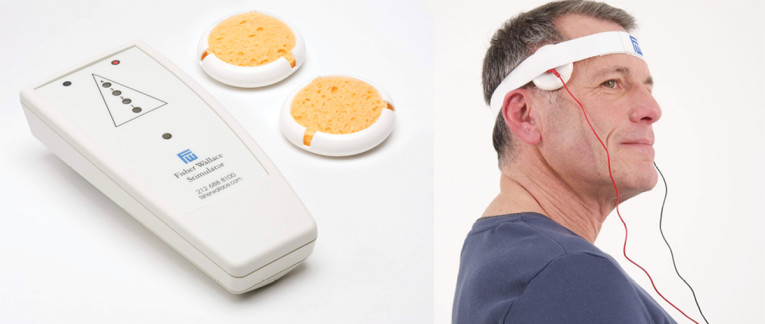
Binaural Beats and Brain Frequency Patterns
To experience a taste of calming simulation, you might search for “binaural beats” on YouTube or any of the music streaming services, and play these programs in the background while you read this article. Ideally experienced with a headphone but stereo speakers will still provide a sense of a sound-induced meditative state.
Binaural beats are an emerging sound therapy making use of the right and left ear, each receiving a slightly different tone, yet the brain perceiving a single difference tone. The binaural tones should be at frequencies lower than 1,000Hz for the brain to detect the beat. The perceived tone is the frequency difference between the waves entering the left and right ear. For example, if the left ear registers a tone at 200Hz and the right ear registers one at 210Hz, the binaural beat is 10Hz—the difference between the two frequencies.
You might also remember this is a phenomenon used on the organ foot pedals. The YouTube channels of binaural beats are usually accompanied by soothing kaleidoscopic transitioning eye patterns—all very new age. The purpose of binaural beats therapy may differ among individuals as some people may need help decreasing their anxiety, while others want to increase concentration or deepen meditation level.
There are many studies where one sense leaks to other perceptions. In one famous study, during a meeting, the interviewer was given a warm cup of coffee and in other cases a cold cup of coffee. When asked about the person being interviewed, the drink temperature had a significant impact in how warm or cold the person being interviewed was perceived by the interviewer.
As another example, we all tap our feet to a catchy beat, so it is plausible that our brain will pick up on a vibration and sync up and this is called brain entrainment.
The following brain pattern/frequencies and are generally accepted as fact:
• Delta pattern: Binaural beats in the delta pattern operate at a frequency of 0.5Hz to 4Hz, which also typically indicates a dreamless sleep. In one study, people who received a delta pattern frequency during sleep entered a deeper stage of sleep, according to electroencephalogram (EEG) brain scan results.
- Theta pattern: Practitioners set binaural beats in the theta pattern to a frequency of 4Hz to 7Hz. Theta patterns contribute to improved meditation, creativity, and sleep and REM rapid eye movement phase.
- Alpha pattern: Binaural beats in the alpha pattern are at 7Hz to 13Hz and may encourage relaxation.
- Beta pattern: Binaural beats in the beta pattern are at 13Hz to 30Hz. This frequency range may help promote concentration and alertness, but may increase anxiety at the higher end of the range.
- Gamma pattern: This frequency pattern accounts for a range of 30Hz to 50Hz. These frequencies may promote maintenance of arousal while a person is awake.
With many therapy devices, there is an unstated assumption that haptics (and audible sounds) will induce the user’s brain into shifting into the target awareness, mood, and emotional state, but this is still uncharted territory. From the devices I have checked out, all this stuff definitely has some positive impact on your state of mind. Maybe I just need a break from time to time, but really that is what this stuff is all about.
Haptic for Music and Movies
In some haptics products, aside from “new age” music, other program material (e.g., movies) can be enhanced by the immersive multi-sensory experience. Dolby surround formats (and most other surround sound movie formats), have a dedicated “boom channel” (LFE) and most audio systems have a subwoofer output. Voice through haptics mostly does not work well and the effects channel does not include the dialog from the program sent to the subwoofers (and tactile devices). Yet I should mention bone conduction for smart glasses, a number of flat screen TVs, and other applications actually accomplish human voice quite well, but that is a topic for another article.
Monster developed a bass shaker “action couch” many years ago, and there is the D-BOX motion system that is built-into couches in cost-no-object home theater systems. These are firmly in the more “shock and awe” home entertainment and gaming side of haptics, and now joined with Harman Kardon’s collaboration with home furnishing brand Lovesac. Their Sactionals StealthTech Sound System includes two couch-embedded front- and rear-firing Harman Kardon speakers, a subwoofer that integrates into the seat frame and a center channel, all completely hidden from view. Users can expand the system with up to four satellite speakers for additional surround sound and satellite subwoofers. The sound properties are optimized to the density of the chosen fabric covers, allowing sound to pass through fabric and upholstery. To quote Lovesac “whether you’re watching a movie as a family, meditating alone, or watching the game with friends, the System adapts to your lifestyle without sacrificing style and comfort.” On demonstration in Lovesac and select Best Buy locations, with a retail price of $3,700.

Resonate has taken the haptic furniture concept to a place that evokes the phrase made popular through its use in the title sequence of Star Trek—“where no man has gone before.” Using a recliner format, Resonate has created effortless Modern Meditation. Most of us are deeply grounded and very much in the moment of the here and now and extracting ourselves from the daily grind can be a lost skill. Resonate is on mission to make meditation more accessible. Resonate uses the science of neural entrainment to transform meditation from hard to easy, helping access to deeper levels of consciousness. Having lived with a development prototype, I can say it works. More than some audio gear in a couch, and quite an impressive creation.
By combing sound, vibration, and visual senses, a truly immersive experience lets you get away from reality for a while. It is so powerful that in my first encounter I could not estimate the duration of the experience—it could have been 5 minutes or the entire afternoon (spoiler—it was 20 minutes).
The haptics recliner is combined with LAYER, a high-tech LED matrix display—sort of a visual analogy of binaural beats. The LED light matrix translates videos of the natural world into an ever-changing sequence of biomorphic patterns visible through closed eyes and proven to activate the brain’s frequency-following response. All this and traditional meditation techniques to change the frequency and pattern of thoughts. Users report a 51% decrease in stress and anxiety levels after one 20-minute resonate session. Having written this article just after coming back from the dentist, this would have enhanced that experience (along with nitrous oxide) but perhaps too “new-age” for my dentist. Shipping about the time you read this.
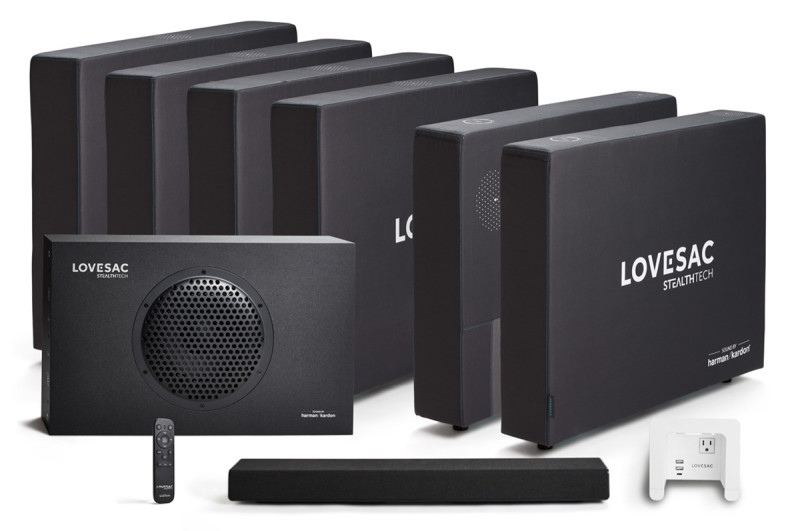
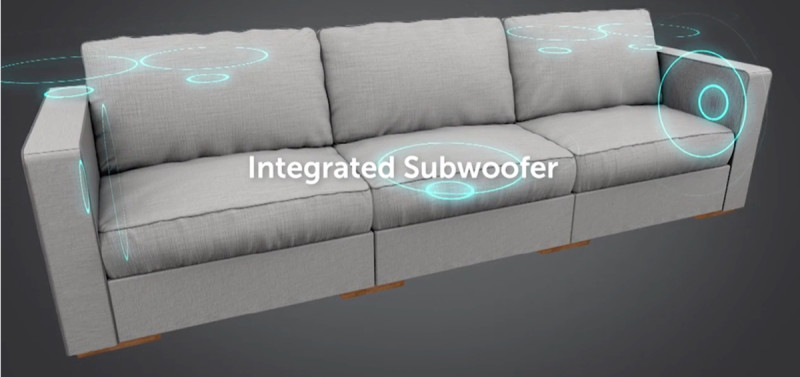
Flexound Augmented Audio, a company from Finland that fully explores the combined potential of haptics and audio in consumer products, is also developing multisensory solutions for cinema, gaming, and therapy. After exploring the technology in commercial movie theaters, Flexound has now introduced the Pulse seat that offers an affordable and captivating home cinema experience, scaling easily to large multi-seat rooms.
The company created earlier products that combine full-range, high-quality audio with gentle physical sound wave vibration, to add the sensation of touch, complementing any listening experience, be it music, games, television, streaming, meditation, movies, VR, or any other sound content. Originally designed and engineered in Finland to help autistic children, the Flexound technology can add value in many industries. The company first explored the potential with its pilot consumer product HUMU Augmented Audio Cushion, which enables users to hear and feel their favorite content without disturbing others around them. HUMU combines Bluetooth audio with haptics transducers to generate an immersive personal soundsphere with amazing bass that can be carried anywhere. The HUMU pillow is commercially available now, and users are discovering the possibilities for all kinds of home entertainment, from playing games to enhancing audio in home offices, while also using it for mediation and relaxation.
Our sense of touch is amazingly sensitive to sound and has been consistently underused in high-quality audio, except for low frequency effects in movies. Flexound aims to make audio a whole-body experience by enhancing vibrations through foam, providing a soft, nearfield listening experience. The company’s patented technology can be embedded into seats, cushions and anything that is soft and in contact with the body.
The new Pulse seat from Flexound is a cinema concept that is able to convert frequencies up to 500Hz into haptic vibrations, and even up to 1kHz in direct contact with hands and skin. By enhancing the sound with haptics, the sound reproduced by speakers doesn’t need as many decibels to achieve clarity of speech, and dramatic scores and sound effects won’t mask dialog, even during the most chaotic action movie sequences. And because Pulse does not rely on far-field listening or filling a room with decibels (e.g., traditional loudspeakers), sound leakage from room to room is considerably less, enabling a fully functioning cinema or gaming station to be placed in any type of room, at home or in an auditorium.
Essentially, Flexound designed a comfortable and safe seat that is able to reproduce the full range surround sound cinema experience with its integrated, patented augmented audio technology which explores the potential of haptics transducers. Users feel and hear every little note and sound in their own personal sound-sphere. The system supports all existing sound content and formats, enhancing the emotions created by the content, and also makes it accessible to more people, such as the hearing impaired.
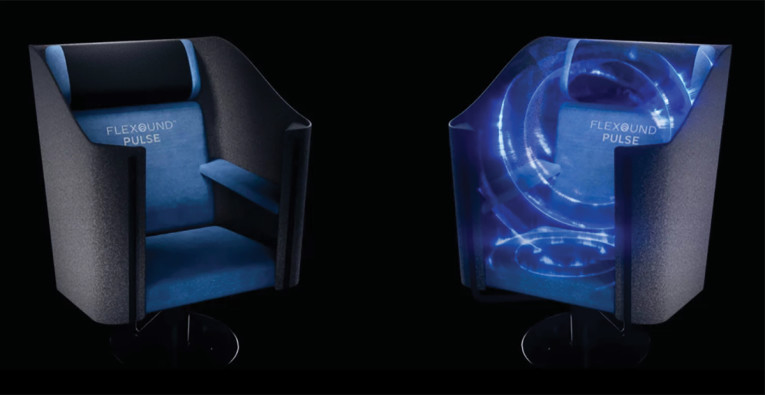
Dreampad
The Aurras is a new product from Dreampad, which has been delivering high-quality music pillows for relaxation and sleep therapy since 2014. The Dreampad pillow was developed from a discovery that bone conduction sound produces a relaxation response in the body and the initial application to help autistic children. Based on this therapeutic insight, the vibrational music technology was embedded in pillows, to create a relaxing and restful bedtime sound experience using bone conduction technology, which permeates the entire pillow but not beyond, not bothering the person next to you in bed.
The Aurras is made specifically to be enjoyed in bed, without cumbersome headphones or earbuds, and without disturbing others. With a Bluetooth amp with integrated equalizer, the Aurras slips under the pillow and lets you listen to the news, movies, podcast, new age music or whatever. Research shows that the Dreampad’s unique technology, combined with specially engineered program material, can reduce stress and anxiety, helping faster time to sleep and stay asleep.

We have previously explored examples of haptic belts, vests, and headphones but how about sports shoes? DropLabs, a company from Los Angeles, CA, has Bluetooth water-resistant sneakers that shake your feet with bass (happy feet!). DropLabs sound-activated footwear uses low-frequency information to extend entertainment experiences. The technology converts audio into vibrations that are felt from your feet through your entire body, transforming music, movies, games (or binaural beats) into immersive, live experiences.
DropLabs’s products look like standard sneakers or training shoes, but are equipped with sound generating technology and Bluetooth, embedded enhanced audio controls, multicolor LEDs plus a few surprises. They produce tactile vibrations accurately and offer both iOS and Android apps that allow you to toggle the bass intensity. DropLabs uses a haptic driver embedded in the midsole of the shoe, creating full-body bass audio which simulates the energy of a live event and immerses users in music, gaming, VR content, and more. The wireless audio transmission is effectively converted into a haptic extension of whatever the user is hearing — music beats, movie, or gaming effects.
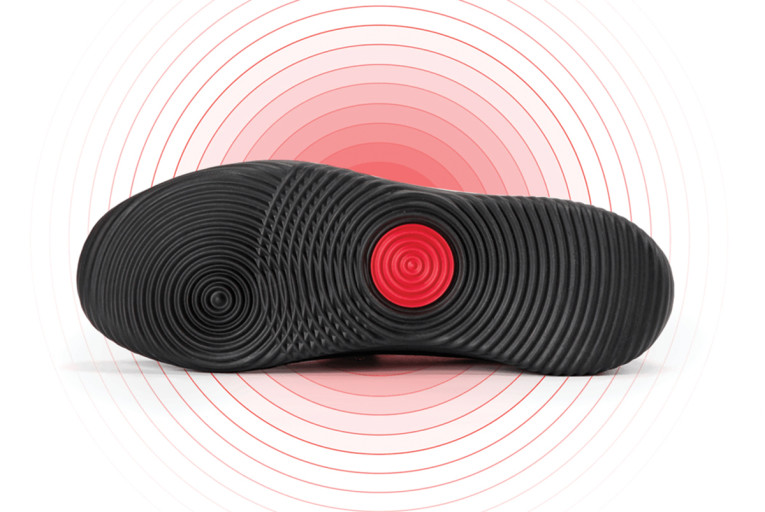
Apollo Neuroscience
The Apollo Neuro is a wearable that provides real-time stress control for better sleep, focus, energy, and calmness through haptic sensations to guide your moods and energy levels. All sound is vibration, and while we don’t interpret Apollo’s vibrations as music, it affects how we feel nonetheless.
The device is in the form-factor of a smartwatch and includes a band for the wrist and another one for ankle-worn use, and I found both comfortable, but for me the wrist was most effective. Dr. David Rabin, a board-certified psychiatrist and neuroscientist, developed the device while studying at the University of Pittsburgh Medical Center, followed by five years of testing and clinical studies.
A smartphone app is supplied for automatic Bluetooth pairing, basic instructions, and selection of the mood program, including time and strength. Seven modes range from Energy and Wake Up, Social and Open, Clear and Focused, Rebuild and Recover, Meditation and Mindfulness, Relax and Unwind, and Sleep and Renew. Each mood program cycles through various stages, so it isn’t repeating the same pattern for the entire duration.
Participants using the wearable measured better cognitive performance and heart-rate variability (HRV) than two control groups — one using placebo vibrations and another not using any wearable tech. One user describes the experience like having a purring cat on her lap. Other Apollo Neuroscience articles claim improved HRV and lower heart rates for subjects in performance or other stressful situations.

Direct Brain Stimulation?
Aside from haptics and acoustical sensations, there are adjunct techniques such as cranial electrotherapy simulation. A relevant example is the stimulator from Fisher Wallace. Two spongy electrodes are applied to either side of your forehead and using a low-level electrical pulse to stimulate the brain to produce serotonin and other neurochemicals required for healthy mood and sleep, while also entraining a calm brainwave state and modulating the “fight or flee” nervous system.
To treat depression and anxiety, patients wear the device for 20 minutes, twice per day—once in the morning and once before bed. To treat insomnia only, the device may be used once before bedtime. Beyond just an electronic “happy pill,” the Fisher Wallace Stimulator is also being used to treat Parkinson’s disease.
Parkinson’s disease is a progressive nervous system disorder that affects movement. In the early stages of Parkinson’s disease, the face may show little or no expression, the arms may not swing when walking and speech becomes soft or slurred. The symptoms of Parkinson’s disease worsen as the condition progresses over time. Although Parkinson’s disease can’t be cured yet, medications significantly improve symptoms. A more drastic solution is surgery in the form of Deep Brain Stimulation (DBS), which is being used to regulate certain regions of the brain and improve symptoms. A surgeon places thin metal wires in the brain; these wires send electrical pulses to the brain to help control some motor symptoms. While transformative for some, DBS is not for everyone. For now, the Fisher Wallace has been found effective in treatment of Parkinson’s disease without the need for surgery and “brain implants.”
Gaming Vests and Wearables
The Aura Interactor was the first commercially available wearable force-feedback vest, released in 1994. The Interactor monitored the audio signal and used Aura’s patented electromagnetic actuator to produce vibrations that can represent such actions as a punch or kick. It was compatible with the Super Nintendo, Sega Genesis and Sega CD consoles. Back then, the gaming developers and the game hardware lacked effects or bass tracks for tactile devices, which limited performance from a user’s perspective. Today, we have haptic gaming vests and belts from companies such as Woojer.
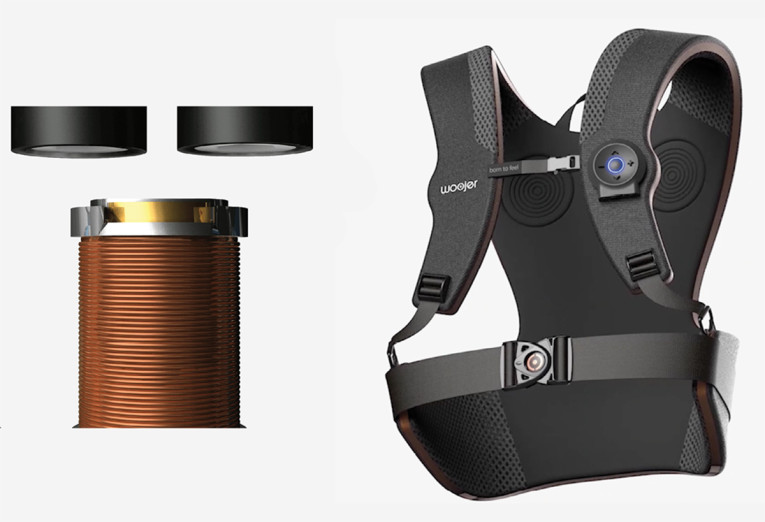
Woojer’s Belt Edge and Vest Edge are wearables, with a tactile transducer, their core technology. The patented Oscillating Frame Actuators (Osci) deliver a combination of tactile sensation, with precise and realistic haptic technology, in the required size, weight, and power consumption. The actuator is designed without a resonator and generates the haptic sensation while maintaining complete silence. A closed-loop metal frame forms the load-bearing structure of oscillating permanent magnets. The frictionless motion guarantees precise harmonic reproduction and reduces distortion. To fine-tune the haptic sensation, the frequency response is tailored by modifying the cross section of the frame. The design utilizes an “I” shaped core as the transducer’s stator and the human body as the resonator. This combination minimizes the number of elements. Operating band is for frequencies up to 200Hz, including subsonic frequencies that are below the threshold of the human ear (1Hz to 20Hz).

Placement of the actuators on body hotspots convince the brain, through the principle of Perceptual Inference (auto-completion), that the entire body is exposed to the high acoustic energy. Two tactile products have been developed, a belt and a vest.
Also targeting gaming applications, headphones are now being “enhanced” with haptic systems creating a more “portable” and convenient solution that doesn’t requiring putting on full-body armor. Gaming headphones from Razer (e.g., the Nari Ultimate) have built-in wide-band voice coil actuators from Lofelt, designed to deliver a high-definition haptic experience. Not to be confused with the larger bass shakers, the Lofelt L5 actuator is about the size of a wristwatch at 17mm × 20.5mm × 6.2mm and weighing 6 grams. It offers a rich and powerful vibrotactile effect and can be driven using standard audio signals from low-power audio amplifier ICs with a haptic sensitivity range of 45Hz to 250Hz. Within the recommended conditions, the actuator is capable of operating continuously for hours — ideal for enhancing immersive experiences in gaming and VR/AR environments. Additionally, the L5 actuator works in combination with the Lofelt Wave real-time firmware and full haptic effects software suite to provide haptic performance optimization.
Another company successfully exploring haptics in headphones is lifestyle audio brand Skullcandy. Always trying to offer something unique, Skullcandy currently offers multiple Crusher headphones, which feature Skullcandy’s patented Sensory Haptic Bass. The Sensory Haptic Bass feature has turned into a defining attribute of the Crusher headphones, becoming widely recognized as a unique audio experience, appreciated beyond gaming. The latest Crusher models introduced in 2020 refine the haptics platform with more multi-dimensional vibration patterns across a wider range of bass frequencies. The latest models also combining Sensory Haptic Bass with active noise canceling and personalization from Audiodo.

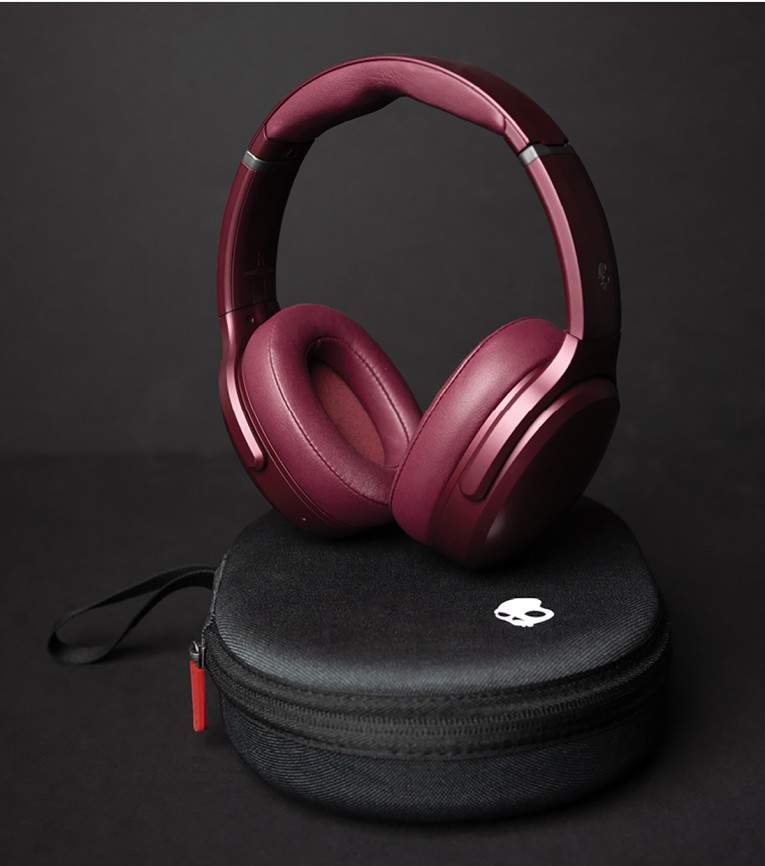
The next step in this field is a new generation of augmentation haptic interface systems, which enable connecting users with remote—or even virtual — experiences. More recently, the whole concept of the Metaverse promises to expand on attempts to connect the physical and the virtual worlds—or what is being described as “persistent online 3D virtual environments” and augmented reality. Haptics systems and actuators will be a natural and vital extension for all those concepts.
This article was originally published in audioXpress, February 2022
 About the Author
About the AuthorMike Klasco is the president of Menlo Scientific, an audio consulting firm for the loudspeaker industry, located in Richmond, CA. He is a graduate from New York University, with post graduate work in signal processing, and he holds multiple patents licensed or assigned. Since founding Menlo Scientific in 1983, he has worked on product development, design and technical support, liaison between suppliers and manufacturing facilities, sourcing guidance, and certification for a large number of companies. Mike specializes in materials and fabrication techniques to enhance audio performance, has over 500 articles published in audio magazines and technical journals, and to this day continues to be a regular contributor for audioXpress and Voice Coil magazines. He presented papers at the Acoustical Society of America, held positions as Session Organizer for the Audio Engineering Society, Chairman of the Committee on Acoustics, and is an AES Life Member.
Read also:
Bass Shakers (Part 1): Enhancing the Deep Bass Experience with Tactile Energy
Bass Shakers (Part 2): Motion Platforms Are Bass Shakers on Steroids





